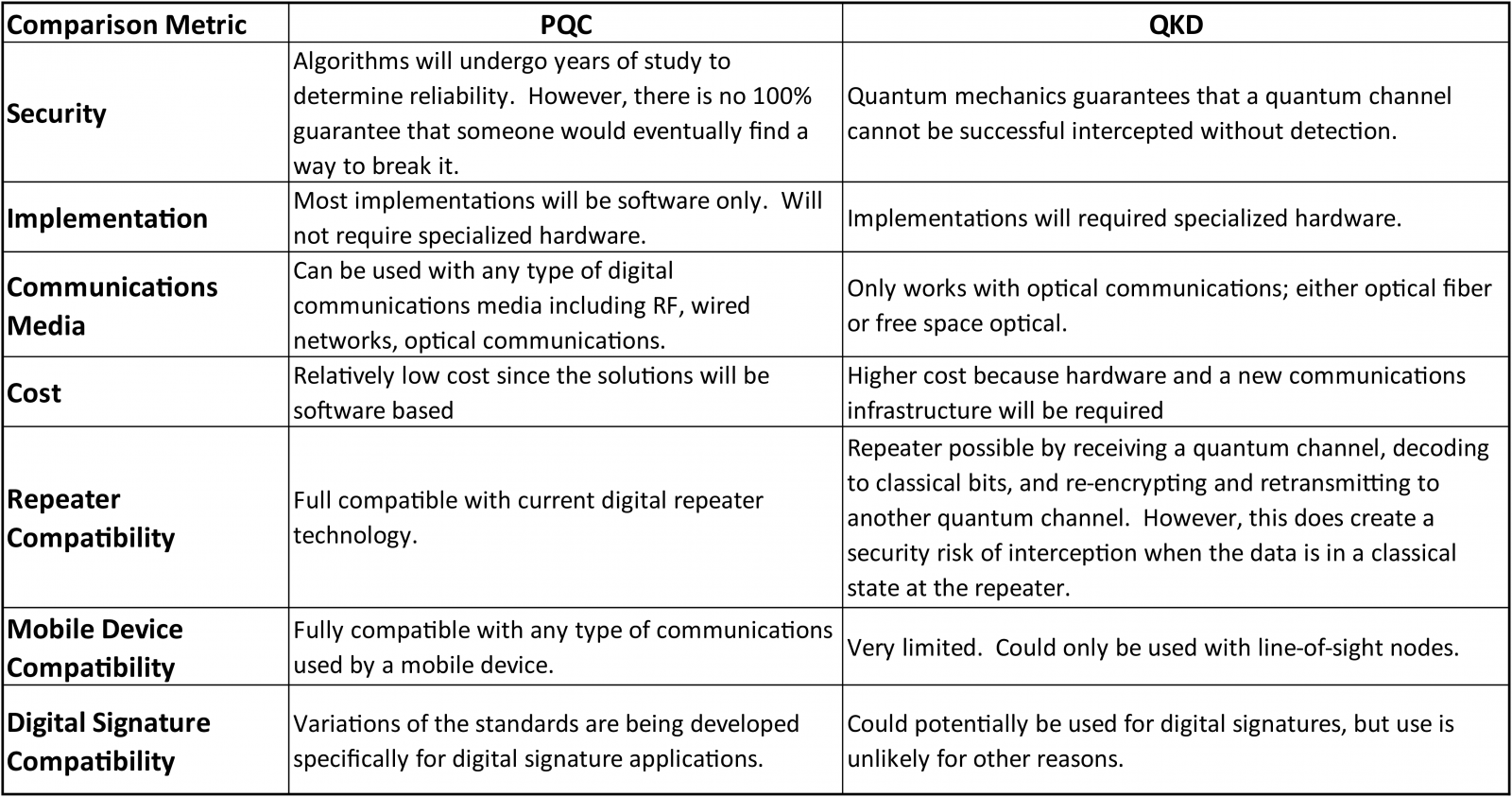QKD Versus PQC – Which One to Use?
There are two camps in quantum cryptography. The first is the hardware-based approach; Quantum Key Distribution (QKD) which uses fundamental quantum mechanics principles to facilitate secure communication without interception. The second is a software approach Post-Quantum Cryptography (PQC). PQC is based upon new algorithms that, unlike RSA, are not based upon factoring a large semi-prime numbers. In the future, large primes will be breakable by high performance quantum computers. As we have indicated in our reports “Quantum Key Distribution (QKD) Markets: 2019-2028” and “Post-Quantum Cryptography: A Ten-Year Market and Technology Forecast”
It is Inside Quantum Technology’s belief that both technologies will co-exist because there are widely different use cases where quantum resistant cryptography technology will be needed. QKD and PQC often different features. We have created — a comparison chart as shown below that contrasts the two technologies.

QKD: Full secrecy, high cost: Inside Quantum Technology believe that the appropriate usages for the QKD approach are highly sensitive applications where secrecy needs to be guaranteed under all circumstances, the parties communicating are in fixed locations and costs are not the number one concern. As we see it, the markets where the use case for QKD can be most easily made are government, the military, and certain parts of the financial services where the cost of a failure could be catastrophic.
While QKD is the only encryption scheme that can in theory promise complete security, the problem is that for terrestrial networks, quantum repeaters are needed and these not only do not exist yet, but no one knows when they will do so. As an alternative, the Chinese government and others have been investigating the use of satellites to send the photons over a long-distance using line-of-sight. According to Inside Quantum Technology’s estimates QKD hardware sales will reach about $980 million by 2024.
PQC – quantum encryption for the masses: Inside Quantum Technology expects that PQC will dominate the high-volume consumer and standard commercial applications where mobility, cost and minimizing changes to the hardware infrastructure are important.
Because this approach is software based, it can use the same hardware infrastructure as today’s digital networks and will not suffer from any reach limitations. PQC is compatible with any medium of digital communication including electrical wires, radio waves, and, of course, optical networks.
Nonetheless, despite years of analysis and testing of the PQC algorithms without anyone finding a way to break them, there may still be a very small possibility that someone could find a new algorithm to break a PQC code in much the same way that Peter Shor was able to invent his algorithm that could break the RSA code. So PQC would not be able to provide the same 100% security guarantees as the QKD approach. On the other hand, as we have already noted, PQC’s target markets are mass markets – and Inside Quantum Technology believes this market will become quite large as the quantum computer threat looms. Thus, we think that the PQC market will reach $3.9 billion by 2028.


















